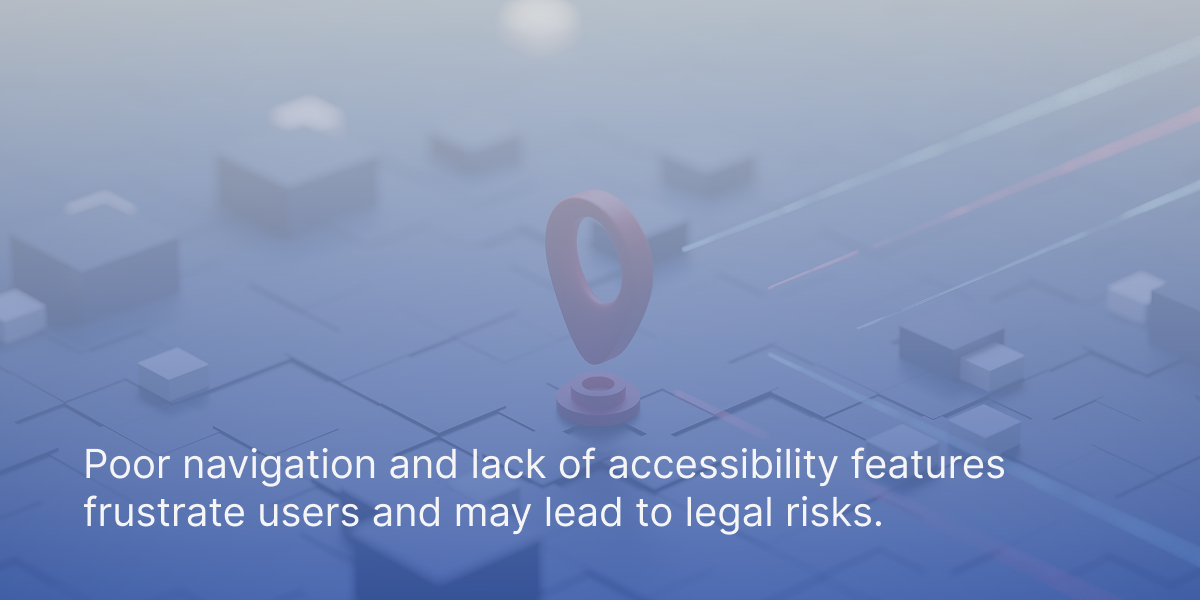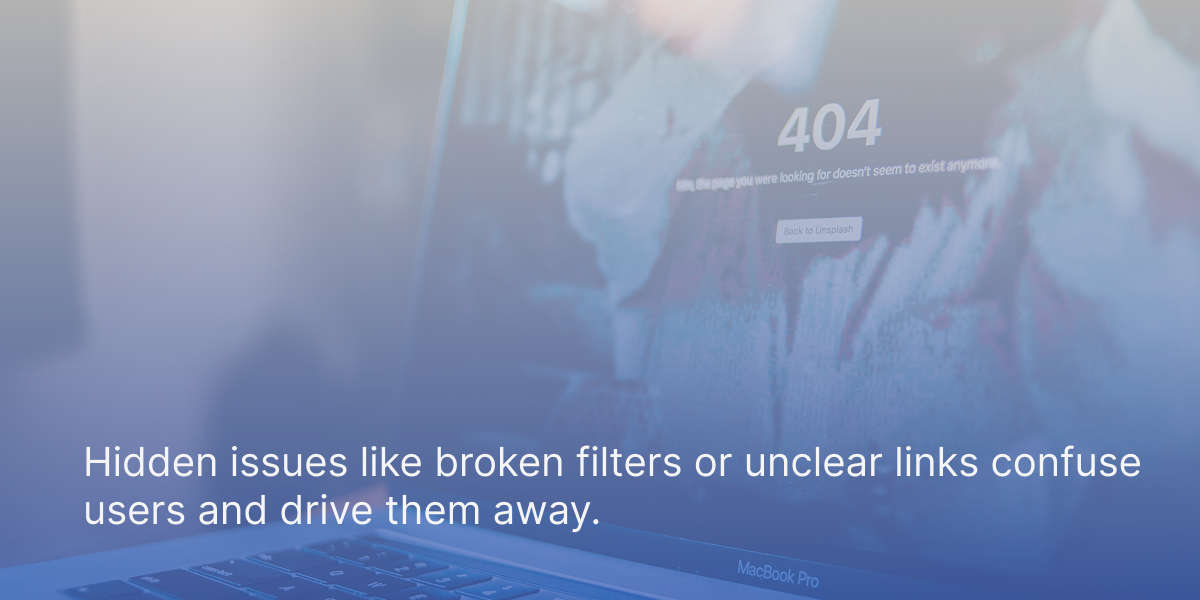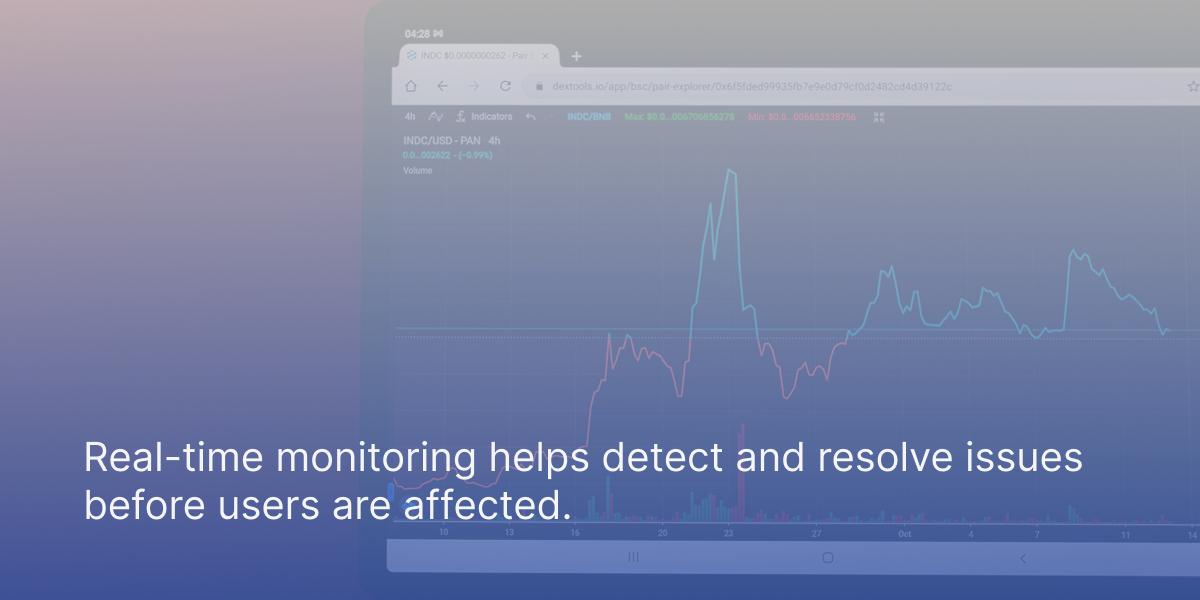Imagine this scenario: You’ve invested heavily in your e-commerce store – high-quality products, effective marketing campaigns, and targeted advertising to attract your ideal customers. Your analytics dashboard shows steady traffic, yet something feels off – sales figures aren’t meeting expectations. Visitors are landing on your site, but too many seem to vanish before completing their purchases. Sound familiar?
Unfortunately, this frustrating scenario is incredibly common. In fact, many online stores are unknowingly losing substantial revenue due to hidden website issues that remain invisible to traditional analytics tools. These subtle technical problems, from unnoticed checkout errors to slow-loading pages, quietly sabotage user experiences, cause cart abandonment, and significantly drain your profits without you even realizing it.
Traditional methods of analysis often miss these critical friction points because they occur silently, beneath the surface. Standard analytics might show you what happened – like visitors dropping off – but rarely explain why it happened. Without real-time insights, issues remain unresolved, leading to recurring customer frustration and loss of revenue.
This article will shine a light on the most frequent yet unnoticed website issues that plague e-commerce stores, explain precisely how they erode your revenue, and offer actionable strategies to identify and fix these problems proactively. By addressing these hidden friction points head-on, you can stop revenue leaks before they escalate and deliver a consistently excellent experience to your customers.
Ready to uncover these hidden site errors and protect your hard-earned revenue? Let’s dive in.
Unnoticed Technical Glitches Hurting Revenue

Take TechGear’s scenario – after collaborating with Kozak Group and deploying a streamlined one-page checkout system aimed at reducing cart abandonment rates – TechGear saw an impressive surge of 22% in total sales volume. This exemplifies the positive financial outcome that correcting underlying technical faults can yield. Worldwide, these errors account for approximately $64.2 billion each year in lost income – a compelling reason for prompt identification and remediation.
The expense incurred by concealed web complications arises from their tendency to go undetected – they might not be apparent either you or your development team yet they exert substantial influence over both client satisfaction and profit margins. From unnoticed bugs during the payment stage through advertisements that take too long loading up to SEO non-compliance – all could lead consumers into abandoning purchases resulting directly in missed revenues opportunities.
By actively seeking out resolutions to these obscure dilemmas, not only enhances user experiences, but also increases consumer contentment – which invariably drives an uptick in company revenue streams.
Website Status and Uptime Issues

Understanding Website Downtime
Website downtime can be a significant issue for businesses, resulting in lost revenue and damaged reputation. When your site is down, users are unable to access your content, make purchases, or interact with your services, leading to frustration and potential loss of customers. Downtime can be caused by various factors, including server issues, network problems, and maintenance errors.
To determine if your site is down for everyone or just you, a website down checker tool can be invaluable. Regular monitoring of website uptime is crucial to prevent downtime and its associated costs. A well-designed website should have a robust infrastructure to minimize downtime and ensure high availability. Prioritizing uptime is essential to create a seamless user experience and maintain customer trust.
Downtime can also impact search engine rankings, making it essential to address uptime issues promptly. A website status page can provide users with detailed information about downtime and maintenance, helping to manage expectations and maintain transparency. By focusing on website status and uptime, you can ensure a reliable and user-friendly site that keeps visitors coming back.
Navigation and Accessibility Issues
Ensuring Accessibility Standards
Accessibility is a critical aspect of usability that is often overlooked, but it’s essential for creating an inclusive user experience. Non-compliance with accessibility standards can result in legal consequences, including fines and lawsuits. The Web Content Accessibility Guidelines (WCAG) provide a framework for ensuring accessibility standards, helping you create a website that is accessible to all users, including those with disabilities.
A well-designed website should include accessibility features such as alt text for images, closed captions for videos, and keyboard navigability. Regular audits can help identify accessibility issues and ensure compliance with standards. Accessibility is not just a moral obligation but also a business imperative, as it can improve user engagement and conversion rates.
By making your website accessible to all users, you can enhance its reputation and build trust with customers. Ensuring compliance with accessibility standards not only helps you avoid legal consequences but also fosters a more inclusive and user-friendly online environment.
Common Hidden Website Errors
Hidden errors on websites, though often overlooked, significantly affect both the user experience and potential earnings. Concealed pricing can cause suspicion among users and prompt them to terminate their purchase prematurely. When web pages are packed with excessive information, it can overwhelm users who are searching for specific details, resulting in frustration and possibly leading them to leave your site. This is often referred to as the problem of too many choices, where an overloaded navigation menu can lead to decision fatigue and increased bounce rates.
Common issues that remain unseen include malfunctioning filters that restrict the options available to a user as well as subpar search functionalities delivering irrelevant outcomes. Users may also find themselves isolated on microsites without an obvious route back to the main website, which contributes to confusion and annoyance. Hazardly scattered information along with poorly labeled links impede navigation and make it challenging for users seeking essential information.
There are remedies for these concealed problems. Tools such as session replay analytics can uncover obstacles hindering conversions by showcasing real-time interactions of users with elements or layouts causing confusion. Streamlining categorization along with enhancing link labels greatly facilitates better navigation experiences for the user. By pinpointing and rectifying these hidden glitches within websites, we not only amplify user contentment, but also promote revenue growth.
Real-Time Site Monitoring for Instant Issue Detection
Engaging in real-time monitoring of your site is a forward-thinking strategy to identify problems before they become apparent to your customers. This approach facilitates the swift discovery of any issues, enabling quick action that reduces interruptions for users. The advantages of utilizing such live monitoring include immediate recognition of complications, an enhanced user experience on your website, and a potential boost in conversion rates. Adopting this form of vigilance guarantees the smooth and effective functioning of your site.
Automated notifications from these monitoring tools provide timely updates to your team about emerging challenges, boosting their capacity for rapid reaction. It’s critical to fine-tune alert configurations with care. Poorly managed alerts can lead to mishaps like sending crucial outage notifications to incorrect recipients or relying on email warnings when the corresponding server itself has malfunctioned – illustrating why opting for suitable forms of notification is imperative so as not to exacerbate existing problems.
Comprehensive surveillance across all servers and related services is paramount in order not to overlook certain faults. If secondary DNS or mail servers are excluded from scrutiny, dilemmas could ensue if there’s an issue with the primary server. Likewise, omitting specific services from watchful eyes may mean missing significant disruptions (for instance, if only FTP service fails while other aspects remain unaffected).
Commitment towards all-encompassing observatory practices contributes vastly toward swiftly addressing malfunctions and upholding peak efficiency levels for one’s website performance.
Tools for Identifying User Friction Points

Heatmaps provide a complementary visual analysis showing where on the page users tend to click, scroll, or place their cursor most frequently. Utilized together, these instruments uncover areas of resistance for the user and support you in enhancing their experience on your site.
Incorporating mechanisms for feedback directly from those who use your site can lead to valuable discoveries regarding issues with your website that might not otherwise become evident through data analytics alone. Merging insights from both session replays and heatmaps with direct user feedback offers a robust strategy for finding and tackling obstacles encountered by visitors navigating your webpage. This comprehensive tactic guarantees a thorough grasp of how users interact with the site, allowing you to take well-informed action towards improving its functionality.
Employing such measures is crucial for identifying friction points which, when resolved, aid in advancing accessibility standards as well as overall satisfaction levels among website visitors. Not only does taking initiative in this area improve experiences, but it also cultivates higher conversion rates along with increased revenue all while ensuring compliance with established accessibility guidelines.
AI-Powered Error Detection
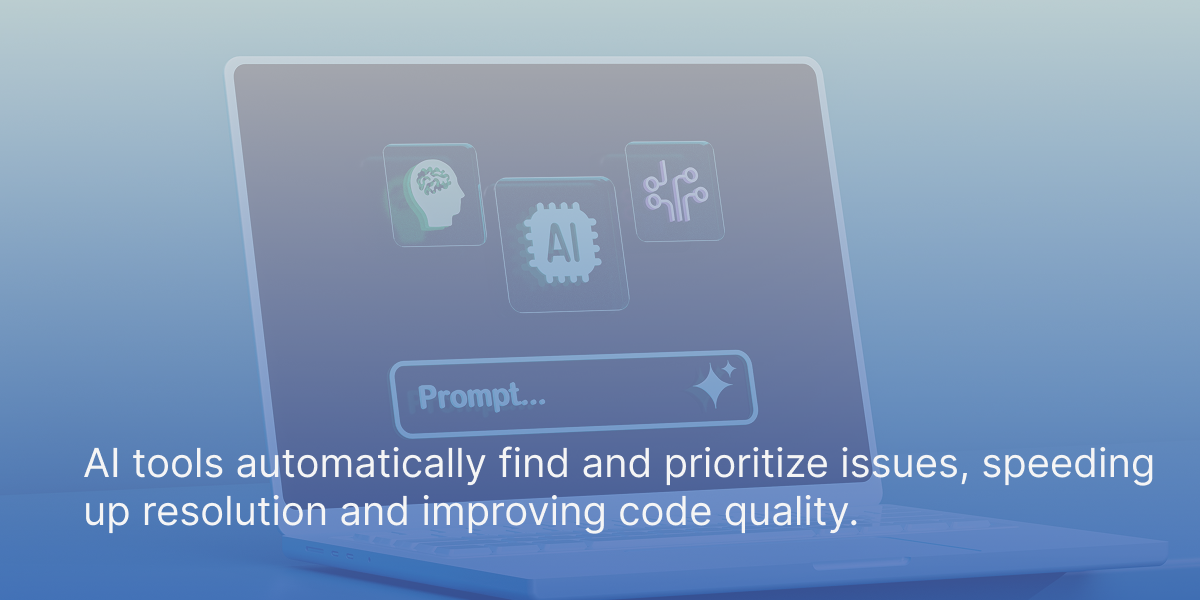
AI-enhanced debugging instruments offer real-time fix suggestions, empowering developers to tackle problems in the midst of coding activities. This not only raises the standard of code quality, but also streamlines development workflows significantly.
Some AI solutions have been crafted with adaptive learning technologies that improve their proficiency in bug identification through continuous interaction with code bases they analyze. By integrating these smart error detection methods into website maintenance routines, a more seamless user experience emerges due to consistent performance optimization across web platforms.
Feedback and Trust Issues
Providing Timely Feedback Mechanisms
Feedback mechanisms, such as progress bars and loading indicators, are crucial for user understanding and trust. Clear and timely feedback can build trust and keep users engaged, reducing bounce rates and improving conversion rates. A well-designed website should provide feedback mechanisms for every user action, ensuring a seamless user experience.
Feedback mechanisms can also help to reduce errors and improve user satisfaction. For instance, showing a progress bar during a multi-step form process can reassure users that their actions are being processed, keeping them informed and engaged. Timely feedback can improve user engagement and conversion rates, making it essential for businesses.
A website that provides timely feedback mechanisms can enhance its reputation and build trust with customers. Feedback mechanisms can also help to identify usability issues and improve the overall user experience. A well-designed feedback system can make a website more user-friendly and accessible to all users, fostering a positive and trustworthy online environment.
Case Studies from Kozak Group
Kozak Group’s case studies exemplify the positive impact that resolving concealed problems on a website can have, with real-life instances such as HomeScape’s 34% surge in revenue following A/B testing. This approach enhanced user interaction on product pages by refining visuals and call-to-action components. It illustrates the clear advantages of taking initiative to uncover and fix issues lurking within your website.
The concrete results featured in these examples underscore Kozak Group’s proficiency at detecting and remedying underlying troubles on websites. By doing so, not only is customer gratification heightened, but also repeat patronage increases alongside prospects for sustained business expansion while helping to prevent potential legal repercussions.
By regularly analyzing and enhancing the status of one’s webpage through monitoring practices, it becomes possible to gain an advantage over competitors while ensuring robust visibility online – as emphasized by these case studies’ insights into proactive web management strategies.
Actionable Steps to Prevent Hidden Website Errors
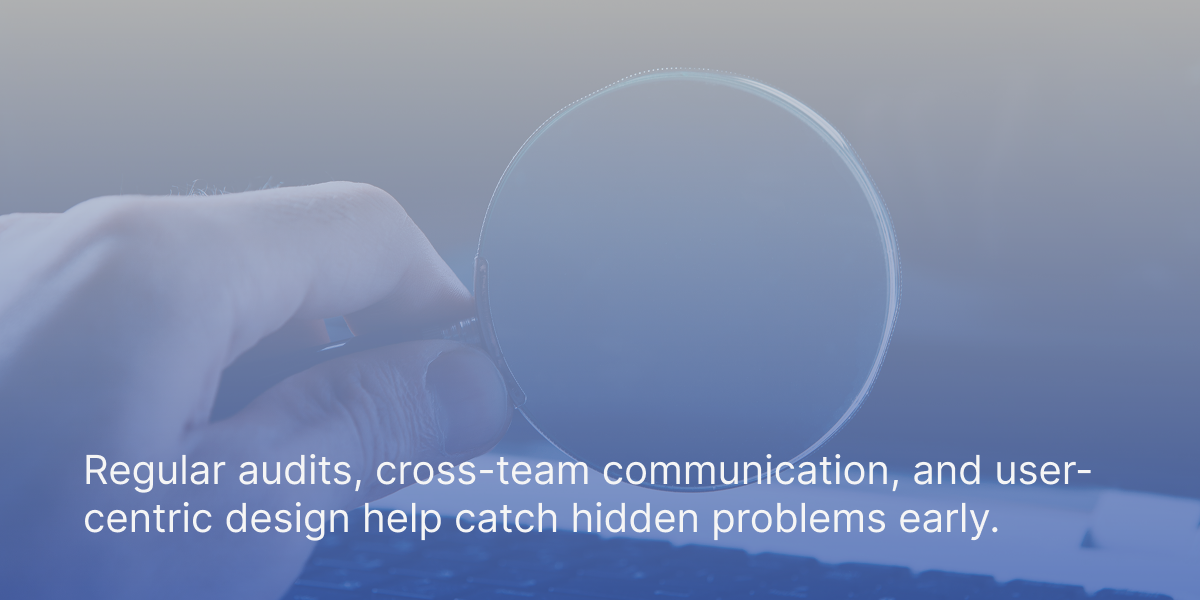
Centering on the consumer experience is key when aiming to spot and fix concealed errors that might dampen user contentment. By making users’ needs and feedback a priority, you may uncover glitches that could potentially remain under the radar. Also, leveraging accumulated data from past monitoring activities can aid in spotting patterns for repeated issues which can guide enhancement efforts going forward.
Implementing these practical measures will assist in safeguarding against hidden website flaws while ensuring an operative and polished online presence for visitors.
Common Mistakes in Website Monitoring and Maintenance
Many errors in the monitoring and upkeep of websites can disrupt your endeavors to ensure a consistently smooth and high-functioning site. A prevalent error is the exclusive dependence on conventional analytics tools, which may overlook vital hidden issues that impact website functionality. While these standard tools are capable of offering beneficial insights, they frequently fail to fully depict user experience and concealed problems.
Neglecting to include crucial email addresses in the whitelist for notification systems often leads to essential alerts being inadvertently caught by spam filters. When performed correctly, effective site monitoring enhances overall performance by tailoring resource use according to observed usage patterns.
By steering clear of these typical blunders, you can achieve thorough surveillance and management for your website – this fosters an improvement in both performance metrics as well as end-user contentment.
Long-Term Value of Fixing Hidden Site Issues
Addressing concealed issues on your website offers substantial enduring value for your enterprise. Businesses that tackle these hidden challenges can improve their standing and reliability, which is crucial for sustaining a trusted brand image. The strategic resolution of these covert site problems may also lead to diminished operational expenses as consistent difficulties are managed and forestalled, paving the way for sustained expansion through enhanced user experiences and reinforced brand confidence.
Businesses that give priority to rectifying undisclosed troubles stand to obtain an edge within their market sector. By ensuring a seamless and effective site experience, they attract and keep customers, facilitating ongoing income growth. Dealing with such hidden matters not only fosters consumer devotion, but also elevates the stature of your brand – helping you conserve funds while amplifying profits.
Summary
It is essential to identify and rectify concealed issues on your website to ensure its smooth operation. These unnoticed errors could result in considerable losses of revenue and dissatisfaction among customers. To proactively tackle such problems, enhance user experience, and prevent potential loss, it’s important to familiarize oneself with common hidden site errors while employing real-time monitoring coupled with artificial intelligence-powered detection methods.
To foster ongoing development, consistently conducting audits of the site, enhancing communication within teams, and prioritizing customer experiences are critical steps. The Kozak Group’s case studies illustrate how resolving obscured website problems can lead to a boost in both revenue and customer loyalty. We recommend taking advantage of Kozak Group’s live site monitoring solution as a means to guarantee peak performance for your website that aligns with achieving business objectives.




